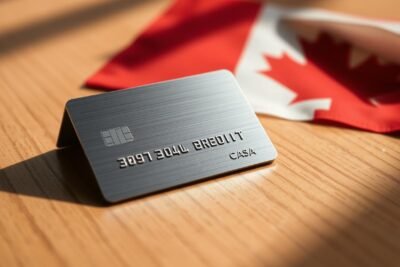
Guide to Student Debt Relief Options Canada 2026

Imagine you graduate, clutching a diploma and a stack of bills. You call a friend and swap stories about payments and interest, then discover a program that cuts federal interest to 0% since April 1, 2023. That change felt like a small, welcome breeze.
The average grad leaves school owing about $28,000 and many take more than ten years to repay. You want a clear path. This guide gives a concise roadmap of federal, provincial and private pieces, and explains who to contact.
We’ll show how the NSLSC helps you track balances and apply for RAP, when loan forgiveness or targeted programs for health professionals apply, and what default really means. You’ll learn practical steps for lower payments now and longer-term planning.
Read on to map a plan you can act on today and to find calm in a complex situation. This primer sets up the details that follow.
- Why student debt relief matters right now in Canada
- Understanding your student loans: federal, provincial, and private
- Federal landscape today: elimination of interest and how NSLSC supports you
- Repayment Assistance Plan (RAP): how repayment assistance can lower or forgive debt
- Student loan forgiveness for family doctors and nurses in underserved communities
- Provincial student loan forgiveness programs at a glance
- Severe and Permanent Disability Benefit: when your federal student loan can be forgiven
- Bankruptcy and consumer proposals: seven‑year rule, hardship, and what’s possible
- Practical ways to manage and pay off your student debt faster
- Your next steps toward a debt‑free future in Canada
Why student debt relief matters right now in Canada
You face real pressure when repayment starts. Missed payments for 270 days (about nine months) can push a balance into default and transfer the account to the CRA.
That shift matters: the Canada Revenue Agency can garnish wages, freeze bank accounts, and intercept tax refunds. The average graduate begins work with roughly $28,000 in student loan debt, often alongside a credit card or car loan.
Cash flow tightens fast in the first six months after school. On-time payments protect your credit and keep more paths open if you need a proposal or repayment assistance later.
- Delaying action lets interest on provincial or private loans grow and raises long-term costs.
- Prioritizing high-interest loans and keeping education payments current reduces stress and preserves eligibility for help.
- With recent government changes, now is a good time to reassess your plan and explore relief options.

Understanding your student loans: federal, provincial, and private
Different lenders bring different rules, and knowing who manages your account changes what help you can get.
Federal government loans are managed through the NSLSC. These federal student loan balances have 0% interest since April 1, 2023 and often qualify for programs like RAP if you need assistance.
Provincial loans vary by province. Many still charge interest, and each provincial aid office sets its own terms and support programs. Check your provincial site for exact rates and timelines.

Government student loans vs private credit: how terms and protections differ
Private borrowing such as a bank line of credit can give flexible access but generally has higher interest and fewer forgiveness programs. You may negotiate with a lender, but protections differ from government plans.
Default and collections: what happens after nine months of missed payments
If you miss payments for nine months (270 days) on a federal loan, the account can go into default. The CRA may then pursue collections, including wage garnishment and bank freezes.
"Act early contacting servicers can keep accounts in better standing and preserve more choices down the road."
When to seek help with student loan debt
Watch for warning signs: tight cash flow, relying on a credit card to cover basics, or falling behind on due dates.
Start by confirming balances and due dates across all accounts, then prioritize higher-interest loans. Contact NSLSC and your provincial office to explore tailored assistance before default becomes a risk.
Federal landscape today: elimination of interest and how NSLSC supports you
From April 1, 2023, federal rules removed future interest on Canada Student Loans and Canada Apprentice Loans. This change lowers your long‑term costs and can shorten the time it takes to pay balances when you keep regular payments.

Zero per cent interest since April 1, 2023
What changed: new policy stopped interest on federal balances from that date forward. Any interest that accrued before April 1, 2023 still applies, and provincial portions of combined borrowing may continue to carry interest.
Tracking balances and payments with the NSLSC
The National Student Loans Service Centre lets you view balances, download statements, set up or change payments, and apply for the repayment assistance plan online.
- Use your NSLSC account to confirm end‑of‑study dates and check which portion of your loans is federal.
- Call NSLSC at 1-888-815-4514 for account help or to troubleshoot issues quickly.
- Do an annual check‑in to review progress, update contact info, and stay eligible for any new program updates.
"Keeping your account in good standing with NSLSC preserves access to assistance and future changes."
Repayment Assistance Plan (RAP): how repayment assistance can lower or forgive debt
If income is low after graduation, a government repayment assistance plan can cut monthly bills and stop interest from growing. Apply early to protect your credit and keep more choices open.
Eligibility, income thresholds, and keeping your loan in good standing
Who can apply: You qualify based on household income and family size. Loans must be in good standing not in default for an application to go forward. Use the NSLSC portal to check status and apply.
How RAP works over time
What it does: RAP reduces required monthly amounts. If approved, the government covers unpaid federal interest so balances do not balloon.
- After 60 months on RAP, or 10 years after your study end date, the program can begin paying down principal and remaining federal interest.
- Renew annually update your income so support continues without interruption.
- Private loans are usually not eligible; federal and some provincial loans are covered.
Extra support for borrowers with disabilities
RAP‑PD gives further reductions for those with a permanent disability and may factor in disability‑related costs. Apply through NSLSC and include supporting documentation.
"RAP can lower payments to $0 in some cases, protect credit, and lead to principal reduction after sustained participation."
For recent developments on forgiveness under income‑based programs, see forgiveness for income‑based plans.
Student loan forgiveness for family doctors and nurses in underserved communities
Clinicians who commit to underserved or remote postings can access a federal program that reduces federal loan balances over time. This targeted forgiveness supports retention in priority areas and rewards sustained in‑person service.
How much you can receive
Family physicians and family medicine residents may qualify for up to $60,000 paid over a maximum of five years.
Nurses and nurse practitioners can receive up to $30,000 over five years.
These payments apply to the federal portion of your loans only.
Key eligibility criteria
- You must have your federal student loan in good standing before applying.
- Complete at least 400 in‑person service hours in an approved underserved or remote community each year.
- Service can be split across eligible years, with annual applications to confirm continued qualification.
"Combine federal forgiveness with provincial incentives where possible to maximize total support."
| Role | Maximum forgiveness | Period | Annual service requirement |
|---|---|---|---|
| Family doctor / resident | $60,000 | Up to 5 years | 400 hours / year |
| Nurse / nurse practitioner | $30,000 | Up to 5 years | 400 hours / year |
| Scope | Applies to federal portion of loans; must be in good standing | ||
Practical tip: map an annual application calendar and confirm how service locations are classified. This helps ensure you receive the full yearly payment and lets you coordinate with RAP and provincial programs to optimize overall repayment.
Provincial student loan forgiveness programs at a glance
Provincial programs often target specific jobs and regions, so where you work can cut what you owe each year.
Here’s a quick summary of major provincial initiatives so you can see what may apply to your profession and location.
B.C. Loan Forgiveness Program
What it does: forgives the provincial portion at 20% per year for five years for priority occupations at publicly funded facilities in underserved areas. Loans must be in good standing.
Quebec Loan Remission Program
Quebec can reduce balances by up to 15% if you finish your program on time and receive Loans and Bursaries each award year.
PEI Debt Reduction Grant
Prince Edward Island offers grants applied to provincial balances: up to $2,000 per year for study before Aug 1, 2018, and up to $3,500 per year after. Residency and recent credentials are required.
Nova Scotia forgiveness
Nova Scotia may forgive up to $20,400 for eligible first non‑professional undergraduate degrees issued on or after Aug 1, 2015, if the degree is completed within eight years.
Ontario rehabilitation
Ontario’s rehabilitation plan helps bring defaulted provincial loans back to good standing with a short payment plan (2–6 months). A minimum of $600 principal must remain; there are limits on repeats.
Newfoundland and Labrador conversion
Eligible provincial loans can be converted into non‑repayable grants when program criteria are met, effectively eliminating the need to pay that portion.
Saskatchewan forgiveness
Saskatchewan offers up to $20,000 for high‑demand professions after at least 12 months and 400 hours of service in designated communities.
"Many provincial programs stack with federal support verify timelines, application windows, and service requirements to maximise benefit."
- Check eligibility, application windows, and whether the program covers only the provincial portion of loans.
- Confirm how annual service, hours, or timely completion affect total forgiveness over multiple years.
Severe and Permanent Disability Benefit: when your federal student loan can be forgiven
If a long‑term medical condition stops you from working or studying, federal rules may cancel your remaining loan balance.
The Severe and Permanent Disability Benefit forgives government student loans when a condition truly prevents gainful employment or further post‑secondary study for life.
Qualifying as severe and permanent and how to apply
What you must show: medical evidence that the condition is permanent and prevents sustained work. Your health‑care provider completes forms that describe functional limits and prognosis.
How it works: apply through NSLSC with completed documentation, keep copies of every submission, and expect processing time while your file is reviewed.
"If approved, your remaining federal balance is cancelled, providing meaningful forgiveness at a difficult time."
- If approved, the benefit cancels the federal loan portion; private loans are not covered and need separate review.
- Consider RAP‑PD for interim assistance while the application is processed.
- Contact NSLSC immediately with any change in your situation and retain all timelines for follow‑up.
| Aspect | Requirement | Result if approved |
|---|---|---|
| Medical proof | Documentation from a health‑care provider | Review and decision by NSLSC |
| Work ability | Must prevent gainful employment permanently | Federal balance cancelled |
| Interim support | Apply for RAP‑PD if eligible | Monthly assistance while decision pending |
For details on similar federal programs, see the federal loan forgiveness program.
Bankruptcy and consumer proposals: seven‑year rule, hardship, and what’s possible
Knowing when your study period ended matters more than you might think when considering bankruptcy or a consumer proposal. The timing determines whether government loans are automatically discharged after insolvency.
The seven‑year rule for government student loans in insolvency
What applies: under the Bankruptcy & Insolvency Act (s.178(1)(g)), federal loans are discharged automatically in bankruptcy or a consumer proposal if seven years have passed since your end‑of‑study date.
Hardship provision: potential relief after five years
If you can show good faith and ongoing severe financial hardship, a court may reduce the waiting period to five years. This requires solid evidence of circumstances and trustee support.
Determining your end‑of‑study date and why it matters
Verify your end‑of‑study date with NSLSC at 1‑888‑815‑4514 or, for Ontario records, at 1‑807‑343‑7260. That date sets the clock for the seven‑year and hardship calculations.
Including loans under seven years and how other debts factor into relief
Loans less than seven years old are not automatically discharged. Including them in a proposal is rare and needs creditor agreement. Private credit tied to education is treated like other unsecured loans.
"Talk to a Licensed Insolvency Trustee to assess timing, likely outcomes, and whether a proposal will free cash flow to keep newer loans current."
- Confirm your end‑of‑study date before filing.
- Consider proving hardship if five‑year relief may apply.
- Use a trustee’s assessment to weigh bankruptcy versus a consumer proposal.
Practical ways to manage and pay off your student debt faster
A clear monthly plan helps you move from juggling bills to making steady progress. Start by building a simple budget that lists essentials, mandatory payments, and one‑time extra amounts you can use to accelerate payoff.
Budgeting, automation, and staying on time with payments
Automate payments to avoid late fees and protect your credit. Set realistic targets and revisit your plan each year as income or expenses change.
Pay high‑interest accounts like a credit card faster while keeping government loans current to preserve eligibility for repayment assistance plan (RAP) if you later need it.
Consolidation, refinancing, and why government protections matter
Refinancing private loans can lower monthly payments but may remove government protections on federal borrowing. Weigh pros and cons before you combine balances.
Grants and tax credits: Canada Student Grants and claiming interest paid
Check grant programs and remember you can claim eligible loan interest as a non‑refundable tax credit for up to five years. Use extra refunds or grant money to pay principal.
"Start early, pay smart, and protect access to assistance when you need it."
| Action | Why it helps | When to use |
|---|---|---|
| Automate payments | Prevents late fees, preserves credit | Always |
| Extra principal payments | Reduces total interest, shortens payoff | When cash allows |
| Refinance private loans | Lower monthly payments | After checking loss of protections |
Your next steps toward a debt‑free future in Canada
Start with a clear, three‑month plan that turns confusing paperwork into manageable steps.
List your loans, rates and due dates, then pick one action this month: apply for RAP, explore a provincial program, or automate payments. Set up your NSLSC account and confirm your end‑of‑study date by calling 1‑888‑815‑4514.
If you work in health care, check federal student loan forgiveness for family doctors and nurses and combine that with provincial supports where possible. If you’re overwhelmed, speak with a Licensed Insolvency Trustee about a consumer proposal or timing.
Make a 90‑day plan: what to apply for now, which payments to automate, and which high‑interest accounts to target. For tools and guidance to manage your student loan plan, visit manage your student loan plan.
If you want to know other articles similar to Guide to Student Debt Relief Options Canada 2026 you can visit the category Finance.






Leave a Reply